THE PRODUCTION
OF CHAMPAGNE
If you have always wondered how exactly champagne is made and what the terms Brut or Extra Brut mean, then you have come to the right place.
Strict quality standards and guidelines apply to the cultivation and production of champagne. Every bottle of champagne stands for a traditional manufacturing process and an individual taste that each cellar master creates. This elaborate handicraft, the love of tradition and the high standards of the winemakers make every bottle of champagne a special pleasure.
Read here how champagne is made from grape harvest to storage and bottling.
– traditionally by hand
THE GRAPE HARVEST
The grape harvest in September is traditionally carried out by hand, modern harvesting machines are not used, as the grapes must not be damaged during the harvest.
As a whole grape, this is brought intact in special transport containers to the nearby companies.
Over 120,000 harvest workers are employed by the normal staff of the regional farms during the harvest, which lasts around 3 weeks.
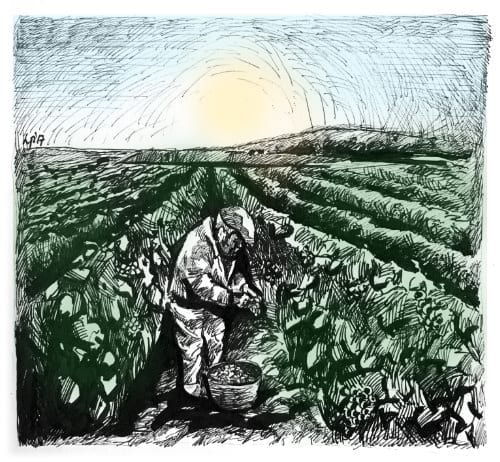
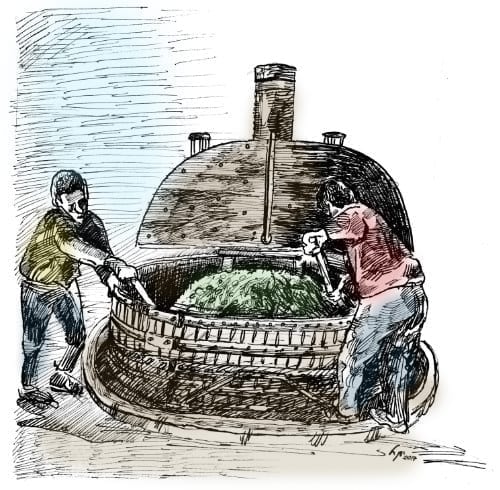
– strictly according to specifications
THE PRESSURE
The pressing is also strictly determined. 4 tons of grapes are processed in each pressing process, about 20 hectoliters are obtained from the first pressing, which is known as a cuvée.
The two other pressings are not of as good a quality as those of the first pressing. These are called Premiere and Deuxième Taille and have more bitter substances in the must due to the renewed pressing. The best champagnes are therefore only made from the cuvée, i.e. from the first pressing.
– the base wine is created
FIRST AND SECOND FERMENTATION
After the primary clarification, the alcoholic fermentation is initiated in which the must in the wine is converted. The natural sugar and yeast contained in the grapes produce alcohol and carbon dioxide in this process. In the fermentation process, however, pure yeast is also added, from which the base wine is made.
Most wineries then carry out malolactic fermentation, in which malic and lactic acids are added to reduce the acidity of the wine. The desired result is a harmonious taste, including brioche and butter.
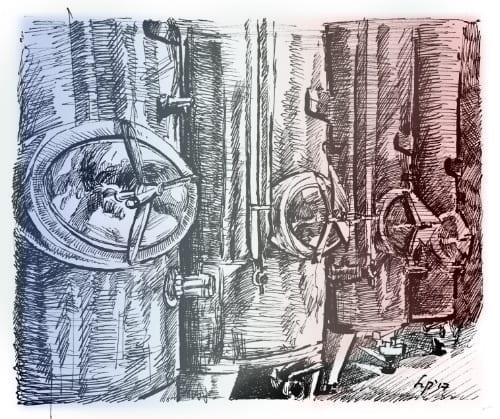
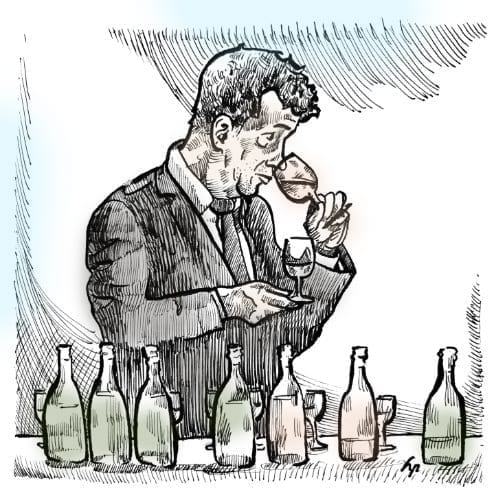
– guarantees high quality regardless of the vintage
THE ASSEMBLAGE
The assemblage then takes place. A very important step in the production of champagne. The grape varieties, base wines, vintages and different locations are put together by the cellar master in order to achieve the taste and quality of his different champagnes.
– valuable time for the champagne
BOTTLING AND RIPING ON YEAST
When bottling (Tirage), fermentation is started in the bottle with the addition of sugar, yeast and, in some cases, old wines (Liquer de Tirage). The bottle is then closed with a crown cap and stored for at least 15 months (for vintage champagne at least 3 years) in cellars protected from light and at a constant temperature of 12 degrees Celsius.
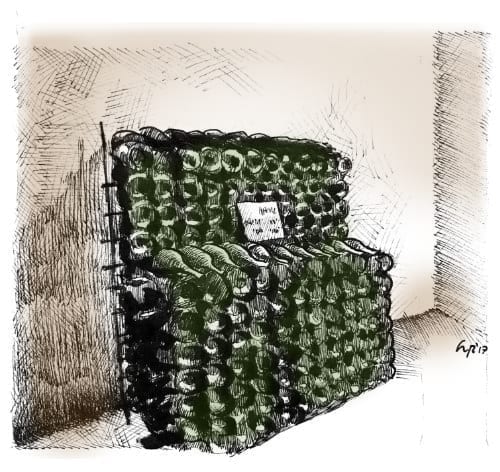
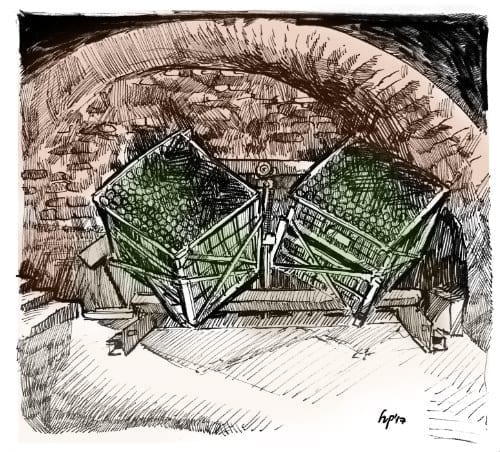
– move the yeast into the bottle neck
THE SHAKE
After the long process described above, the wine must be cleared of deposits.
For this purpose, the bottles are brought into a position in which the bottle neck points downwards. The deposited yeast residues are shaken into the bottle neck at regular intervals by turning the bottles. This process can be done by hand with about 24 turns in 11/2 months or can be shortened to a week by automated shaking in wire baskets.
– remove the yeast
THE DEGORING
When degorging, freezing at -27 degrees Celsius, the residues collected in the process of shaking in the bottle neck are enclosed and when opened, due to the high pressure, shot out of the bottle.
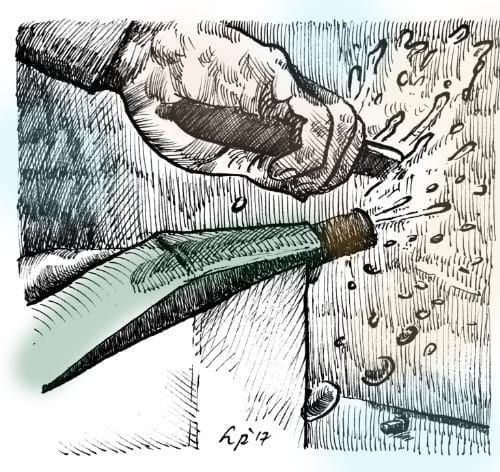
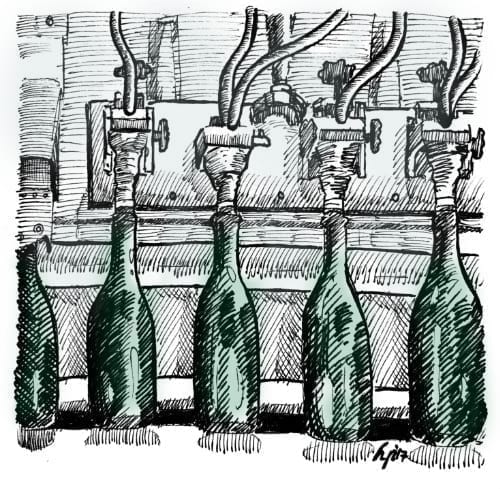
– the cellar master's secret recipe
THE DOSAGE
The minimal loss of liquid during degoring is compensated for by adding the Liquer de Dosage. This dosage is a secret of every cellar master and consists of sugar solutions, sweet wines or liqueurs. This final touch creates the individual taste of the champagne.
Immediately after the dosage, the champagne is shaken and x-rayed for purity. Then the bottle is closed with a natural cork, a metal capsule is put on and fixed with the wire basket (Muselet). Finally, the film cap (coiffe) and the label are attached. After a short storage period, the champagne is ready to be sold and shipped.
The residual sugar content of the champagne is also determined in this way and is set in the following levels:
- 0-3 Gramm / Liter
- Brut Nature / Ultra Brut / Dosage Zero
- 0-6 Gramm / Liter
- Extra Brut
- 0-12 Gramm / Liter
- Brut
- 12-17 Gramm / Liter
- Extra Sec / Extra Dry
- 17-32 Gramm / Liter
- Sec
- 32-50 Gramm / Liter
- Demi Sec
- > 50 Gramm / Liter
- Doux